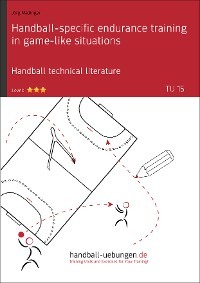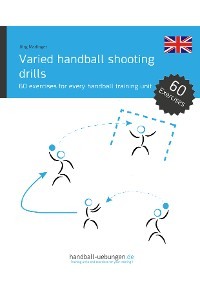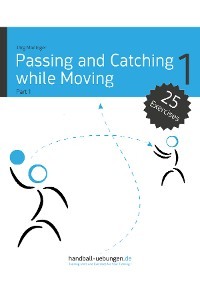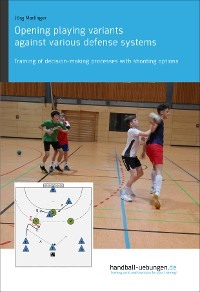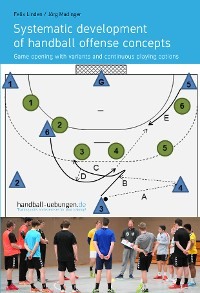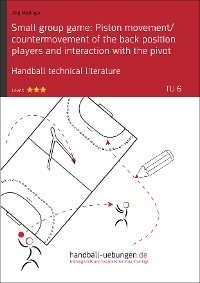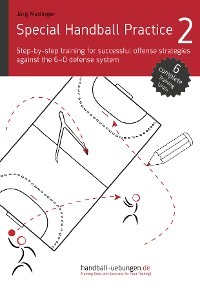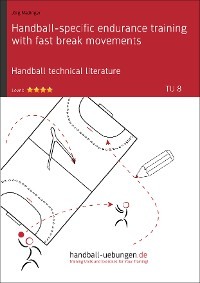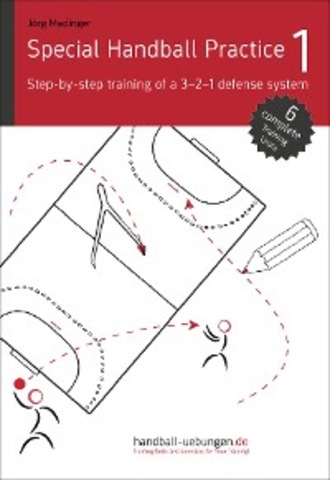
Полная версия
Special Handball Practice 1 - Step-by-step training of a 3-2-1 defense system

Introduction
Dear reader
Thank you for choosing a book of the handball-uebungen.de training guide series.
The 3-2-1 defense system is an excellent strategy to put the attacking players under pressure in their initial actions. This often results in quick turnovers and fast breaks. However, a good basic fitness as well as a thorough 1-on-1 defense training are prerequisite for this. To make your youth training comprehensive, include practicing the 3-2-1 defense system as a mandatory element.
As in each volume of the handball-uebungen.de series, this book has its focus on practical exercises which can be integrated in each handball training unit. Get inspired, learn how to develop a 3-2-1 defense system, and don’t forget to be creative on your own! A short theoretical introduction to the general training schedule will help you to integrate training units into your own annual schedule.
Publishing information
1st English edition released on 26 Sep 2018
German original edition released on 16 Jun 2012
Published by DV Concept
Editors, design, and layout: Jörg Madinger, Elke Lackner
Proofreading and English translation: Nina-Maria Nahlenz
ISBN: 978-3-95641-221-9
This publication is listed in the catalogue of the German National Library. Please refer to http://dnb.de for bibliographic data.
The work and its components are protected by copyright. No reprinting, photomechanical reproduction, storing or processing in electronic systems without the publisher's written permission.
1. Insight into the annual schedule
Training objectives
In the training of adult teams, a coach usually will be measured based on his or her success (league position). Hence, the individual training units are strongly focused on the respective opposing team (aim of season). Winning games and making efficient use of the team’s potential are paramount.
In the training of youth teams, however, the individual development is the most important objective which has priority over success. The players should also be trained on a general basis, i.e. on each position (no positional specialization, no offense/defense specialization).
Annual schedule
The following points should be taken into consideration when creating your annual schedule:
- How many training units do I have (do not forget vacations, holidays, and the season schedule)?
- What do I want to achieve/improve this season?
- What goals should be achieved within a given concept (of the club, the association, i.e. the German Handball Association [DHB], for example)? You can refer to the publications of the DHB for information about defense systems, individual offense/defense skills, and the expected performance of a certain age group.
- What skills does my team have (do the individual players have)? You should continuously analyze and document the skills of your team so that you can make a target-performance comparison at a regular basis.
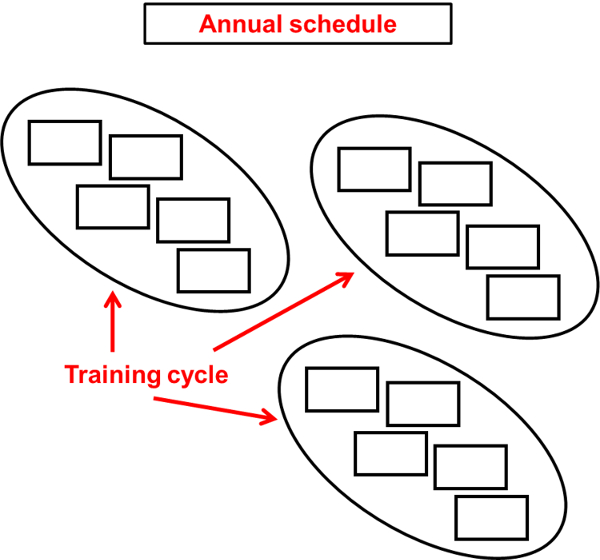
Individual steps of the annual schedule
A handball season can be divided into the following training phases:
- Preparatory phase until the first game: This phase is suitable for improving physical fitness skills such as endurance.
- 1. First part of the season until the Christmas holidays: The Christmas break should be kept in mind here.
- 2. Second part of the season until the end of season.
You should then refine and elaborate these training phases step by step.
- Division of training phases into sections with part-specific objectives (monthly schedule, e.g.)
- Division into weekly schedules
- Planning of individual training units
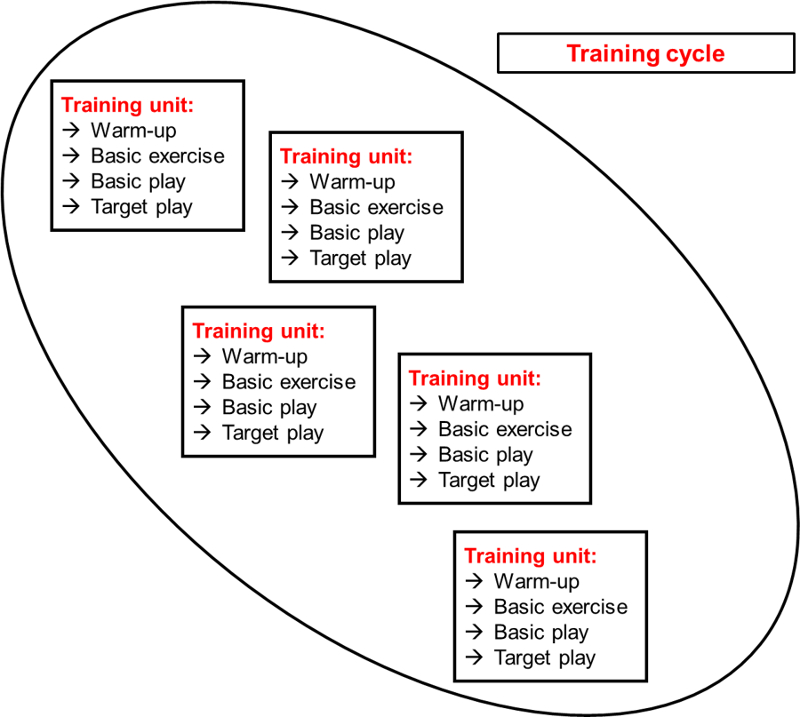
Creating well-structured training units
A clear structure is important for the annual schedule as well as for the planning of the individual training units.
- Work with parts (see monthly schedule). You should work on a special topic over a certain period of time, especially in the training of youth teams. That way, you can repeat exercises and make sure the players memorize the courses.
- Each training unit should have a clear training focus. Do not mix topics within a training unit, but make sure that each exercise has a well-defined objective.
- The players are corrected in accordance with the training unit's focus (when training the defense, defense actions are corrected and pointed out).
2. Structuring a training unit
The focus of the training should run like a red thread through the entire unit. It is advisable to follow the basic timescale below:
- Approx. 10 (15) minutes – warm-up.
- Approx. 20 (30) minutes – basic exercises (2 to 3 exercises max. plus goalkeeper warm-up shooting).
- Approx. 20 (30) minutes – basic play.
- Approx. 10 (15) minutes – target play.
1. timescale for a 60-minute training unit / 2nd timescale in brackets for a 90-minute training unit.
Warm-up practices
- Opening of the training unit: It may be advisable to start the training unit with a ritual (get together in a circle, exchanging high-fives) and to explain the contents and the objectives of the training unit to the players.
- Basic warm-up (jogging, activation of blood circulation and the musculoskeletal system).
- Stretching/strengthening/mobilization (preparing the body for the physical stress of the training unit).
- Short games (these should already focus on the objective of the training unit).
Basic exercises
- Ball familiarization (focused on the objective of the training unit).
- Goalkeeper warm-up shooting (focused on the objective of the training unit).
- Individual technique and tactics training.
- Technique and tactics training in small groups.
In general, the running and passing paths are predefined during the basic exercises (you may increase and vary the requirements during the course of the exercise).
Additional information on basic exercise
- Each player should do the drill (switch quickly).
- Very frequent repetitions.
- The players should rotate or do the drill on both sides simultaneously / slightly delayed to avoid long waiting periods.
- Practice individually (1-on-1 to 2-on-2 max.).
- Add additional tasks/drills, if applicable (to make the exercise more complex).
Basic play
Most of all, the basic play differs from the basic exercise in such a way that now there are several options for action (decisions). The player(s) should realize the respective options and make the ideal decision. Here, the players practice decision-making in particular.
- The players should now implement what they practiced during the basic exercises under competitive conditions.
- Working with alternative actions – practicing the decision-making process.
- The players should repeat the drill frequently and try out different actions.
- Working in small groups (3-on-3 to 4-on-4 max.).
Target play
- The players now implement what they practice before in free play. To increase their motivation, you may award additional points or additional attacks for correct implementation.
- In the target play, the players implement what they practiced before (5-on-5, 6-on-6).
Depending on the contents and the objectives of the training unit, you may have to slightly adjust the timescales of the basic exercise and basic play (e.g. for endurance training where they may be substituted by endurance units).
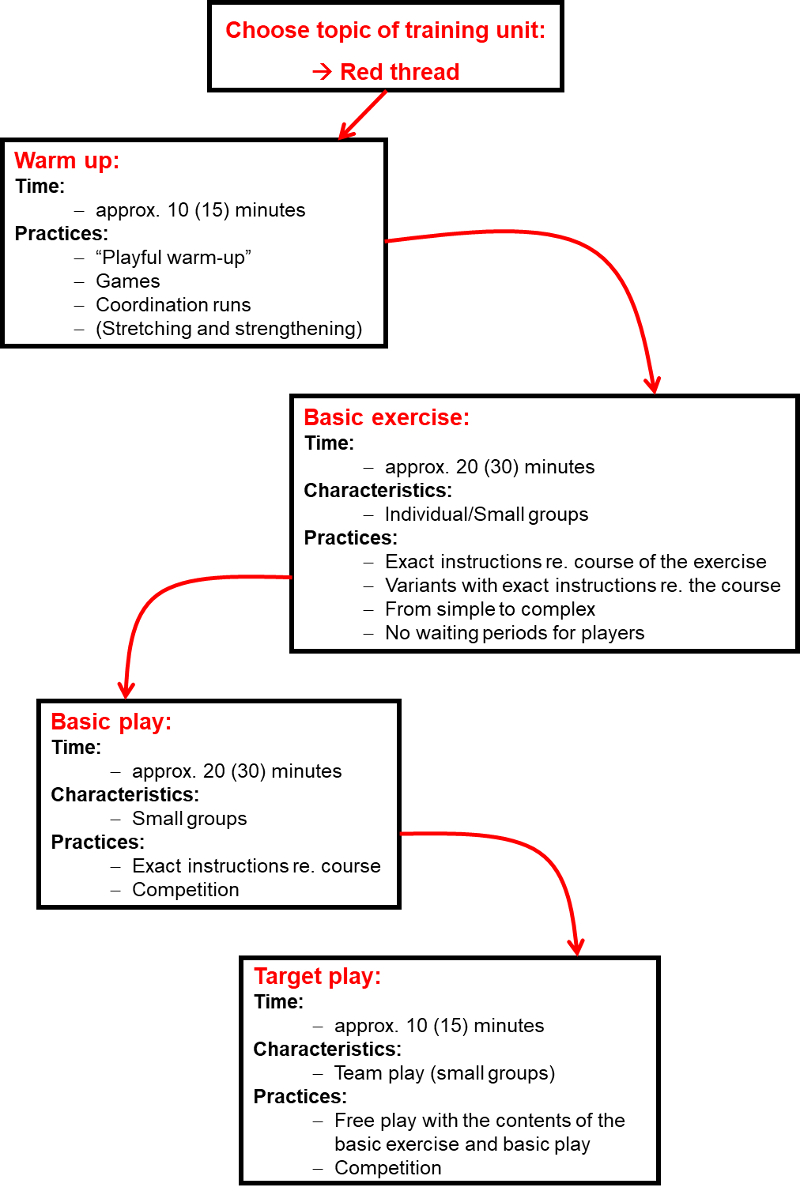
Set topics
- Individual training of the players according to the respective conceptual training framework (DHB or the club’s individual conceptual framework).
- Tactical training of defense and offense systems (age-dependent):
→ From man coverage to a 6-0 defense system, for example.
→ From 1-on1 to 6-on-6 with initial actions practiced in teams, for example.
3. Roles/tasks of the coach
It is mainly the personality and the behavior of the coach that makes the training a success. Therefore, it is important to observe certain behavioral rules to guarantee a successful training. The coach's social skills have an impact as important as his expertise.
A coach should:
- describe the training and its objectives to his team at the beginning of the training unit
- always speak loud and clear
- talk from such a position that all players can hear his instructions and corrections
- recognize and correct mistakes and give advice when correcting
- mainly correct what is part of the training objective
- point out and compliment on individual progress (give the player self-confidence)
- support and permanently challenge the players
- always be a role model - during training and games, but also outside the court
- come to training and games well-prepared and in a timely manner




